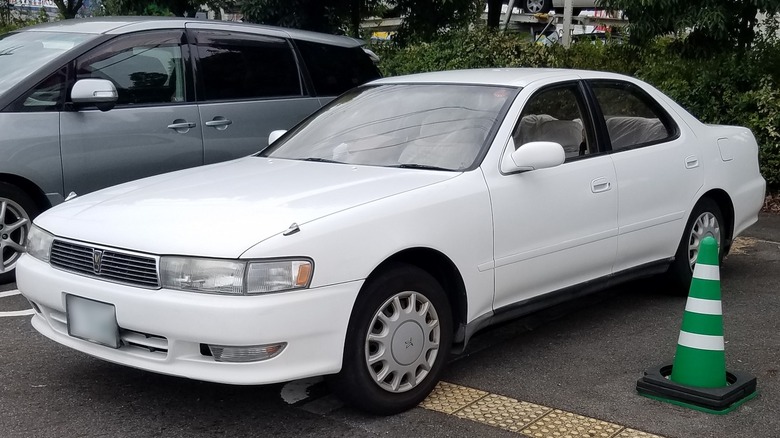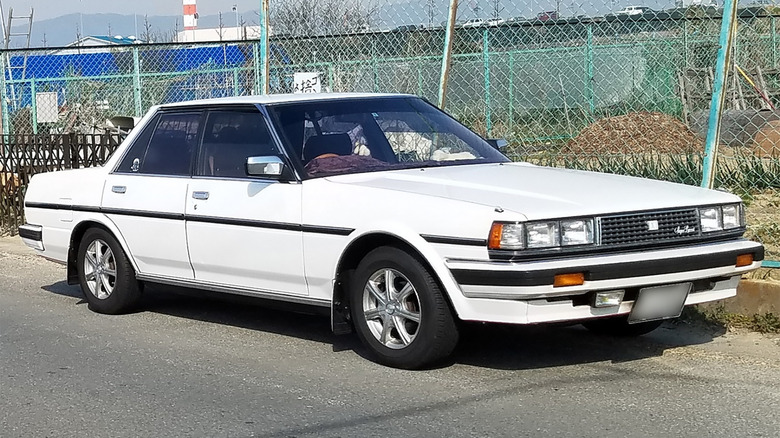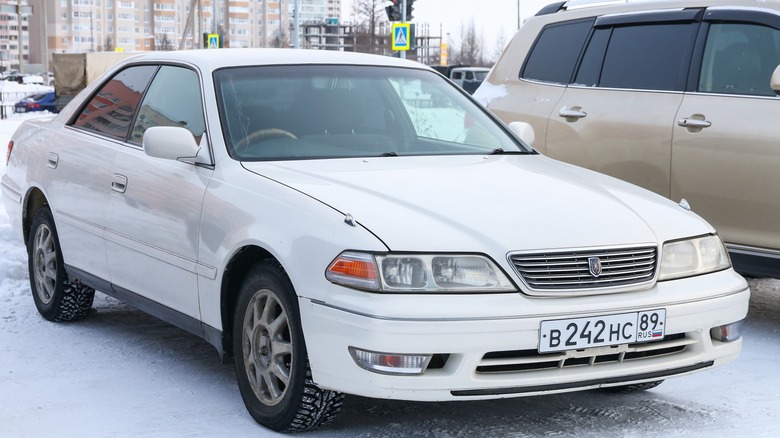Why The Toyota Cresta Was A Totally Underrated JDM Model
Throughout the 1980s and 1990s, Toyota introduced some of the most iconic bits of JDM car history to the world. Cars like the AE86, Cressida, Soarer, and of course the Supra, are still mainstays of car meets, race tracks, and drift events alike. However, one model stands out as a bit of an under-loved example, largely due to its limited availability. Hopefully showcasing this car's history and features will help folks understand that it's time to give the Cresta the love it deserves.
The Toyota Cresta is a model that many folks may not be familiar with. Effectively, it's a high-class variant of cars that were already available from Toyota. However, Instead of a trim level of an existing model, the Cresta got its own name and was treated as its own model. It's a bit weird to understand, but basically, it was either based on the Mark II or Cressida platform in certain regions, and effectively served as a stepping stone between those chassis and the Toyota Crown for those who wanted a bit more luxury in their lives.
[Featured image by Toyotacoronaexsaloon via Wikimedia Commons | Cropped and scaled | CC-BY-SA 4.0]
Different generations of mid-luxury
Toyota's website excludes the first-gen Cresta models (X50 series from 1980-1984) through its lineage for whatever reason, perhaps due to its similarly exclusive release through only certain dealerships in Japan.
However, the second generation Toyota Cresta (X70) was released more widely in August 1984. Toyota was an early adopter of turbocharged engines, and the Cresta is a prime example. This generation model was available with a turbocharged 2.0L inline-six that made 145 horsepower. Alongside it, two naturally-aspirated inline-six offerings, a four-cylinder option, and even a turbo diesel variant were available. Finally, 1985 brought the Cresta GT, which used a twin-turbo six-cylinder and made 182 horsepower.
Just four years later Toyota released the third-gen Cresta (X80) in 1988. Updated styling and an even more plush interior were met with another host of engine options. Among them were again a host of twin-turbo inline-six engines, a four-cylinder, and a turbo-diesel option. The crown jewel, though, was the 1989 addition of the legendary 1JZ twin-turbo six-cylinder.
1992 brought the next-generation Cresta (X90), and most JDM-loving folks will recognize it as a member of the JZX90 family. Also known as the JZX91 when equipped with the 2JZ, this generation Cresta is perhaps the most iconic. Modern upgrades like ABS and a torque-sensing LSD, combined with the 1JZ and 2JZ powerplants, create a luxurious grandma car that comes with some real grunt and capability.
[Featured image by Toyotacoronaexsaloon via Wikimedia Commons | Cropped and scaled | CC-BY-SA 4.0]
JZX100 and the end of the Cresta
September 1996 would be the last time Toyota introduced a new Cresta model. It marked the most powerful and modern version to date, with up to 276 horsepower courtesy of the twin-turbocharged 1JZ engine under the hood. That is, of course, the limit that the Japanese automakers agreed upon for the sake of public safety back then. A lot of high-performance cars had "276 horsepower," but putting them on a dyno told a different tale.
The final generation Cresta wasn't a huge departure from a mechanical standpoint compared to the previous generation. Instead, it just served to add a little more power, get a little bit bigger, and modernize its styling a bit.
The Toyota Cresta ended production in 2001 alongside the Chaser — which was effectively the same thing but a high-performance variant rather than a luxury take. The Chaser and Mark II get plenty of love, but the Cresta seems to fly under the radar among general Toyota or car enthusiasts.
That's a bit of a shame, because it's laden with classic Toyota styling and, of course, the almighty powerplant combination that is the 1JZ and 2JZ engines. They're also rear-wheel-drive and comfortable. Truly, the Cresta stands out as a criminally underrated bit of JDM car history.


